How to Check Engine for Spark
Using an inline spark plug tester is the easiest and safest way to check for spark by yourself. Alternative methods to test an engine for spark include removing the spark plug and grounding it or testing for spark with a screwdriver.
Important
- When you test your ignition system for spark, keep your hands away from the ignition coils, wires, or spark plugs while cranking the engine. Ignition coils can induce, on average, 30,000 volts, enough to cause injuries and shock.
- If you will be cranking the engine for an extended period to test your car for sparks, keep a backup battery source connected to avoid draining the main car battery.
How to test for spark
Checking if you get an ignition spark with a test light is simple. Insert the spark plug into an inline tester between the spark plug and the ignition coil.
Remove engine cover
If the vehicle was made in 2000 and higher, it is most likely fitted with an engine cover. Lift the cover to remove it. Engine covers are held in place with tabs.

Locate the spark plugs
Usually, the spark plugs are placed right on top of a four-cylinder engine. This is also typically true for inline-six engines. If you have a V6 engine, you will have three spark plugs on the left bank or bank 1 of the cylinder and three more on the right side of the engine block or bank 2.
Disconnect the injector
We don’t want to flood the engine with fuel. Therefore, it is recommended that you unplug the electrical connector from the fuel injectors or remove the fuel pump’s relay as a best practice.
If you check only one of the cylinders for a spark for a couple of seconds, you may be fine without disconnecting the spark plugs. However, cranking the engine for an extended period with the injector connected will flood the cylinders with gasoline, which could lead to foul spark plugs.
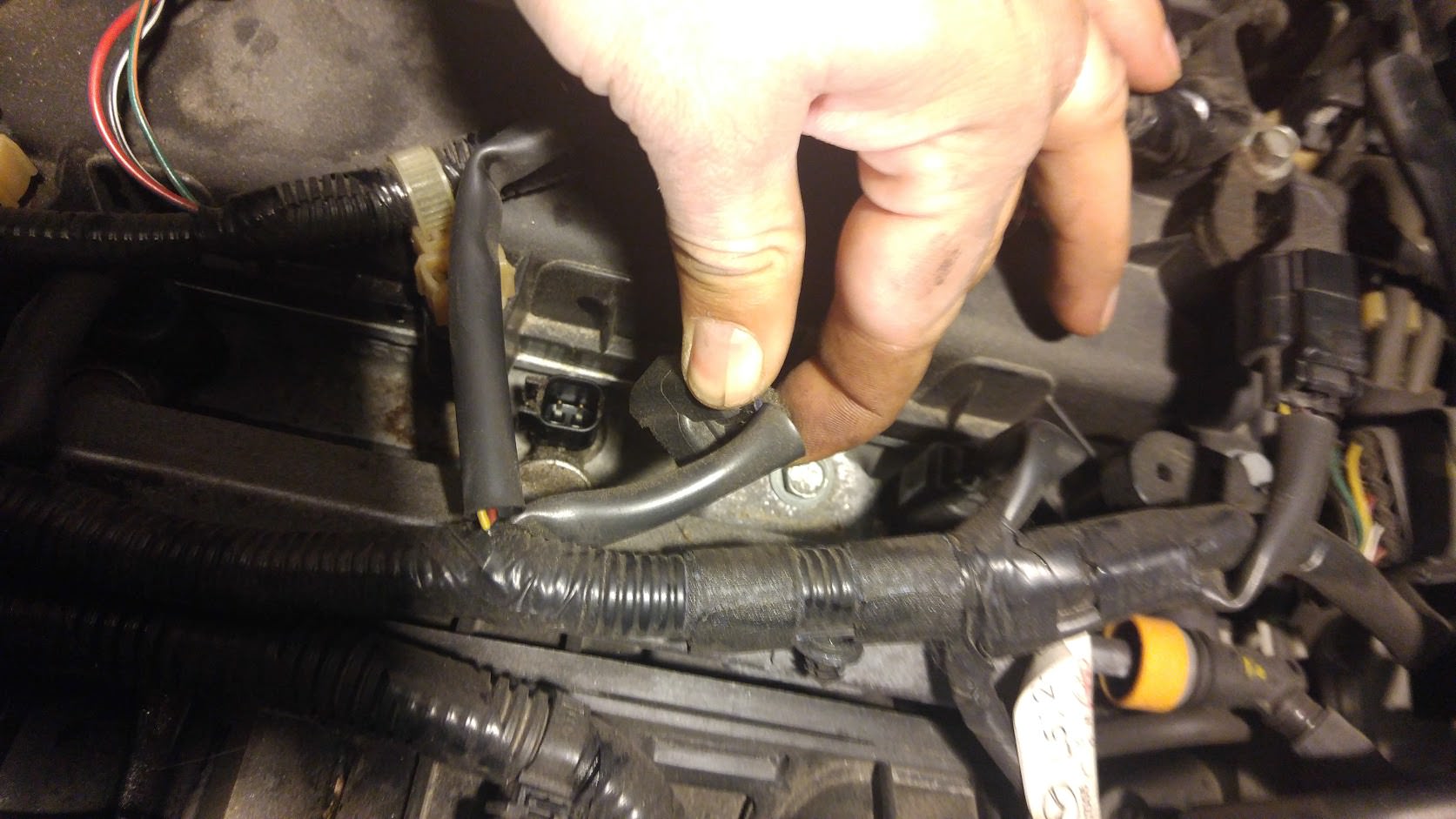
If the injectors are inaccessible, you can also try the Clear Flood Mode by fully applying the accelerator and brake pedal while cranking the engine. The ECU will not command the injectors, preventing fuel from being supplied to the engine cylinders.
Remove the ignition coil
Remove the ignition coil from the spark plug you want to test. Unplug it from the spark plug, but keep it connected to the wire harness.
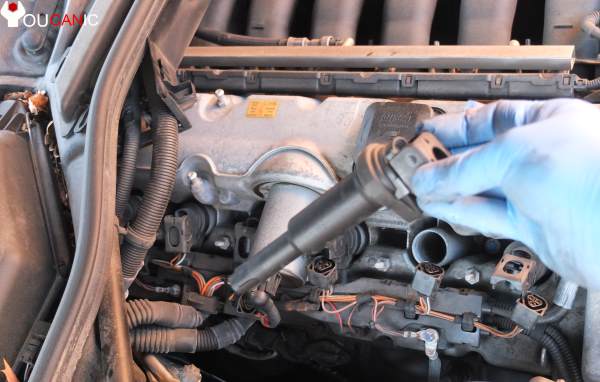
Connect spark plug tester
Connect the inline spark plug tester between the ignition coil and the spark plug. One end of the spark plug testers fits on the ignition coil, and the other on top of the spark plug.
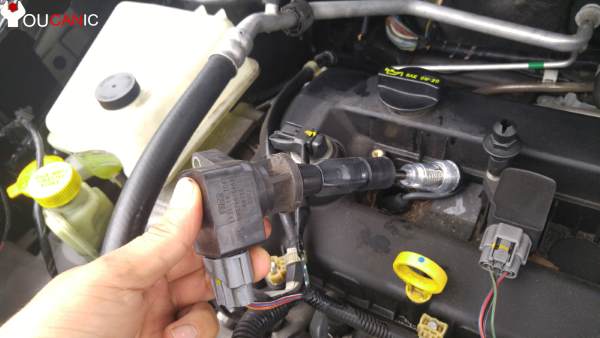
Check for spark
Set the spark plug tester aside. It is time to check if your engine is getting a spark. Keep your hands away from the ignition coil and the spark tester. Have a helper turn on the ignition and try to start the engine
As the engine starts cranking, look for a spark on the test light. If a small light flashes, it indicates you are getting a spark. If your car still does not start, you may have a fuel-related or engine timing issue. Also, check for bad spark plugs. You are not getting a spark if no light is at the test light.
How to check for spark with a screwdriver
This procedure is not advisable because it includes high voltage and the risk of injury. Using a screwdriver is a quick and dirty method of checking for a spark.
Locate spark plug
You will need to pop the hood open. Remove that large engine cover and find the spark plugs.
Remove the spark plug wire or ignition coil.
For the latest model cars, you most likely have a coil-on-plug type ignition system, or the coils are secured on top of each plug. Remove one of the ignition coils. If you have plug wires, remove one wire from the spark plug.
Connect screwdriver to test for spark
Stick your screwdriver into the ignition coil or the plug wire boot.
Place the screwdriver near the engine block
Place the screwdriver about 1/8″ from the engine block. While someone else cranks the engine, you should closely examine the gap between the engine and the screwdriver. If your ignition system works properly, you should see a spark here. You won’t see a spark here if your spark plugs aren’t firing. This means you have an ignition problem you need to address.
Test for spark with no tools
Another method to check if you are getting spark plugs is to remove the spark plugs from the engine.
Plug it back on your ignition coil or spark plug wire and ground the threaded part of the spark plug to the engine block.

Make sure you unplug the injector or remove the fuel pump relay. As you crank the engine, you should see a current spark at the tip of the spark plug.
There are several other ways to check if a car engine is getting a spark. You can check for sparks using a multimeter, test light, or screwdriver, or you can even remove the spark plug and ground it on the engine block or frame.
What to do if your car won’t start
You already confirmed that the engine is getting a spark, but only cranks and will not start. The problem could be any of the following:
- No fuel or low fuel pressure
Low fuel pressure will prevent the car from starting the engine. Check the fuel pressure and the fuel pump’s operation. - Ignition Module Defective
If your vehicle is equipped with an ignition module, it is possible that it could get defective. - Kaput or Bad Crankshaft Position Sensor (CKP)
On newer vehicles, the CKP sensor monitors crankshafts’ speed of rotation and position. If it fails, you will notice intermittent starting difficulties. Typical symptoms include the car starting fine when cold but when it warms up. The CKP sensor’s problem is that it may sometimes not even trigger the check engine light. - Timing Issue
If there is a timing issue and valves don’t close when the pistons hit Top Dead Center (TDC), your car won’t start. - Low compression
Low cylinder compression can also cause no-start conditions.
If you are getting a spark at all ignition coils except one of them, the most likely cause is a bad ignition coil or a cut wire for that particular ignition coil.
Conclusion
The methods described here help you learn how to check for an ignition spark. If your car doesn’t start, consider other possible fuel pressure issues. This guide simply shows you how to verify if the spark plugs are firing, nothing more.
While these instructions were meant to help you learn how to check for sparks on a car engine, these methods can check for sparks on lawnmowers and motorcycles, as well as any large or small gasoline engine.
Frequently Asked Questions
How do you inspect the spark plug operation without a test light?
Another means to check if a spark plug is firing is by removing the spark plug from the engine. Plug the spark plug on your ignition coil. Ground the threaded part of the spark plug to the engine block. Crank the engine and see if you notice any spark at the spark plug tip.
How do I know if I need new spark plug wires?
Most owners recognize that they need to replace the plug wires when the engine starts to misfire, struggles to accelerate uphill, or sets the check engine light with codes such as P0300, P0301, P0302, P0303, P0304.
Do you notice any arc from the wire to the screwdriver?
If you do, it means you need new spark plug wires.
We hope you find the How to Check Engine for Spark guide helpful. For more help on your vehicle, check these troubleshooting and repair guides.






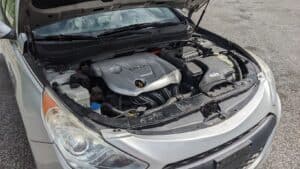
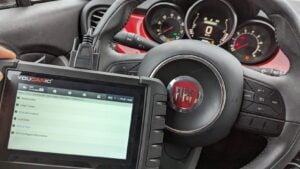
Great explanation on trouble shooting car faults. Have taken hours to read through and this has inspired me alot to learn more into Automotive Diagnosis